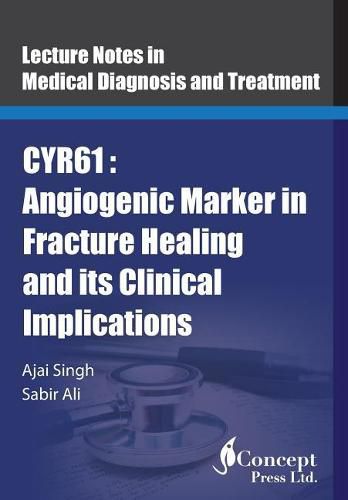Readings Newsletter
Become a Readings Member to make your shopping experience even easier.
Sign in or sign up for free!
You’re not far away from qualifying for FREE standard shipping within Australia
You’ve qualified for FREE standard shipping within Australia
The cart is loading…






The fracture healing is a postnatal regenerative process that recapitulates many events of embryonic skeletal development. Although fracture repair usually have the potential to regain its pre-injury cellular composition, structure and biomechanical function, about 10% of fractures will not heal normally. Long bone fractures are the most common traumatic injuries to the human beings, in which tibial bones are the most common one. Presently there is no standard criteria exist for diagnosing fracture impaired union early. Till date clinico-radiological examination are most commonly used for assessment of fracture healing progression. But due to lack of objectivity the assessment of fracture healing varies among orthopaedic surgeons. This variability can be problematic in both clinical and orthopaedic trauma research settings. Also inability to predict impaired healing early also charges extra cost, morbidity, long time hospitalization to the patients. An understanding of risk factors for impaired healing and of diagnostic tests used to assess fracture healing outcomes early can facilitate a systematic approach to provide a better assessment and management of fractures. Therefore to overcome the current limitations of clinico-radiological assesment of fracture healing, over the past few decades, scientists and cli-nicians have been trying to exploring the use of different biomarkers that may reflect the bone turnover process and might be used as a marker to predict the healing impairment early. Angiogenesis plays a crucial role during intramembranous bone formation and endochondral ossification. Cysteine Rich Angiogenic Inducer 61 (CYR61) is one of the marker which was express during angiogenesis as well as bone remodeling process. CYR61: Angiogenic Marker in Fracture Healing and its Clinical Implications provides current information regarding the biology of fracture repair, reviews the importance of angiogenesis during fracture repair and explores one of the angiogenic biomarker, the CYR61 in predicting the healing outcome early. The authors have thoughtfully and skillfully provided current knowledge in this exciting area. This book should be of value to those in training, clinicians, and basic scientists interested in biology of biomarkers in relation to repair of the musculoskeletal system.
$9.00 standard shipping within Australia
FREE standard shipping within Australia for orders over $100.00
Express & International shipping calculated at checkout
The fracture healing is a postnatal regenerative process that recapitulates many events of embryonic skeletal development. Although fracture repair usually have the potential to regain its pre-injury cellular composition, structure and biomechanical function, about 10% of fractures will not heal normally. Long bone fractures are the most common traumatic injuries to the human beings, in which tibial bones are the most common one. Presently there is no standard criteria exist for diagnosing fracture impaired union early. Till date clinico-radiological examination are most commonly used for assessment of fracture healing progression. But due to lack of objectivity the assessment of fracture healing varies among orthopaedic surgeons. This variability can be problematic in both clinical and orthopaedic trauma research settings. Also inability to predict impaired healing early also charges extra cost, morbidity, long time hospitalization to the patients. An understanding of risk factors for impaired healing and of diagnostic tests used to assess fracture healing outcomes early can facilitate a systematic approach to provide a better assessment and management of fractures. Therefore to overcome the current limitations of clinico-radiological assesment of fracture healing, over the past few decades, scientists and cli-nicians have been trying to exploring the use of different biomarkers that may reflect the bone turnover process and might be used as a marker to predict the healing impairment early. Angiogenesis plays a crucial role during intramembranous bone formation and endochondral ossification. Cysteine Rich Angiogenic Inducer 61 (CYR61) is one of the marker which was express during angiogenesis as well as bone remodeling process. CYR61: Angiogenic Marker in Fracture Healing and its Clinical Implications provides current information regarding the biology of fracture repair, reviews the importance of angiogenesis during fracture repair and explores one of the angiogenic biomarker, the CYR61 in predicting the healing outcome early. The authors have thoughtfully and skillfully provided current knowledge in this exciting area. This book should be of value to those in training, clinicians, and basic scientists interested in biology of biomarkers in relation to repair of the musculoskeletal system.